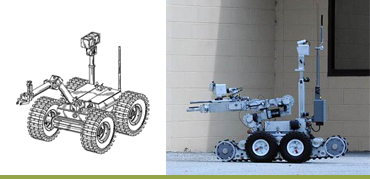
In recognition of ever growing cross-border sales, the US recently expanded its design protection laws to make it easier to file a single application in multiple jurisdictions. Read on if you deal with products that could benefit from design protection outside the US.
As of May 13, 2015, filers of design patent applications can elect to have their application evaluated under a new international treaty system. The Hague System for the International Registration of Industrial Designs provides a practical business solution for registering up to 100 designs in over 64 territories through filing one single international application.
The Hague System is directed to the ornamental design of a product or component. In the US, this type of protection is called a Design Patent. Other countries call it Industrial Design Protection. Whatever the name, this type of design protection is different and can be addition to utility patent protection governing a product’s function or how it is made.
So when should someone elect the Hague System when applying for a US Design Patent? The primary reason is when sales are anticipated in other jurisdictions covered by the Hague System, e.g., Europe, S. Korea, Singapore, Japan. The Hague System application is intended to result in lower government fees if seeking protection in several member countries. Also, applications filed under the Hague System will be made public through publication six months after filing, regardless of whether a patent is ever granted. Where the ornamental design is the key feature, publication provides several benefits: early notice to competition, the potential availability of additional right to damages for pre-grant infringement, and the creation of more easily accessible prior art for use by Examiners to reject similar later-filed designs. Not all countries have joined the Hague System, most notably Canada and China. Therefore obtaining design protection in those countries will still require retaining local counsel to file country specific applications.
When will a traditional US design patent application be the best choice? Some design applications are filed as a low-cost alternative to a utility patent application to quickly achieve “patent pending” status. In this situation, the traditional application is still the best. Traditional U.S. design applications are not published until they are issued, often at least 12 to 18 months after filing, if not longer. This secrecy can work to the Applicant’s advantage by keeping their competition unaware of the scope of the “patent pending.” A traditional application is also a few hundred dollars cheaper than a similar Hague System application. Therefore, if protection is only desired in the United States, or in the US and other non-Hague counties only, the traditional US design application is likely preferred.
What else should I know? In order to more closely harmonize US law with rights provided in other member countries, all US design patents issuing from applications filed after May 13, 2015, whether filed as a traditional application or a Hague System application, will be entitled to a 15 year term from the patent’s issue date. This 15 year term is one year longer than the previously applied 14 year term. The USPTO has not yet applied this additional year of protection to current active design patents or to pending applications filed prior to May 13, 2015.


